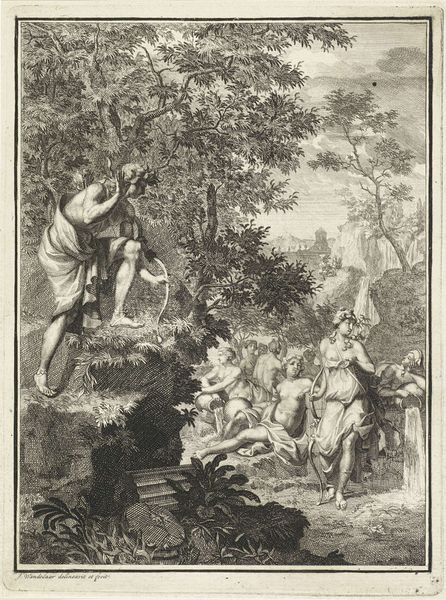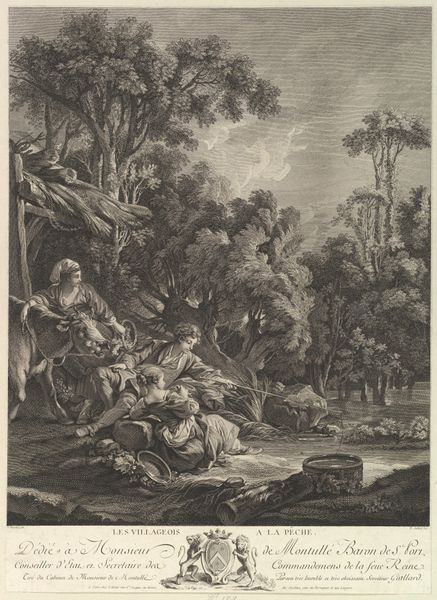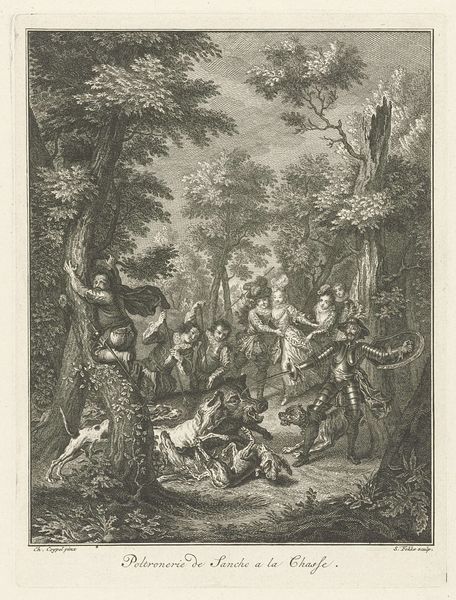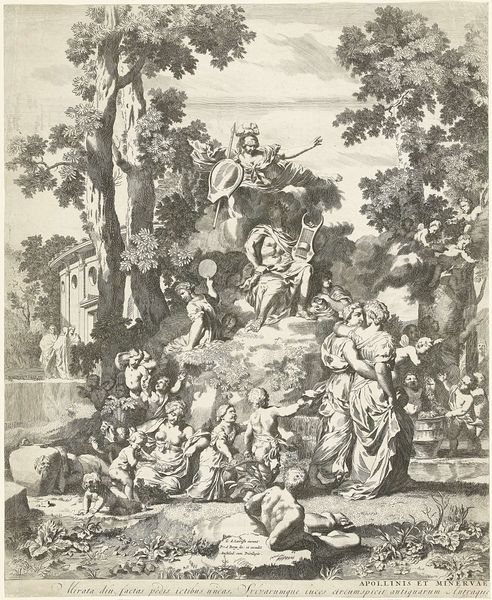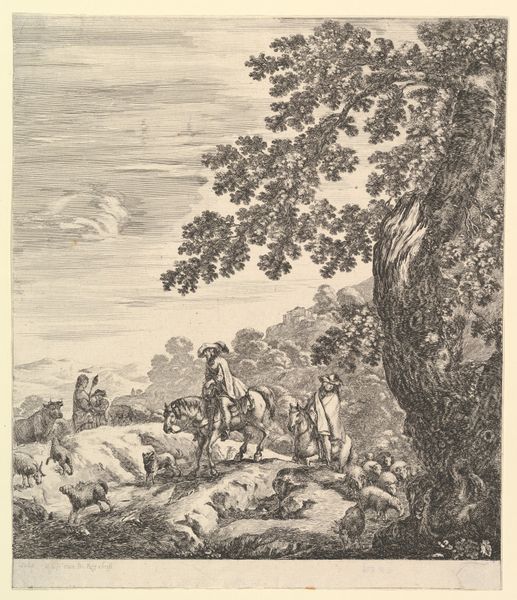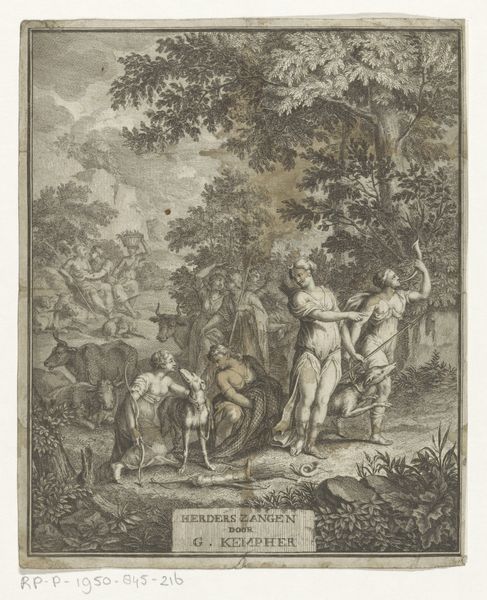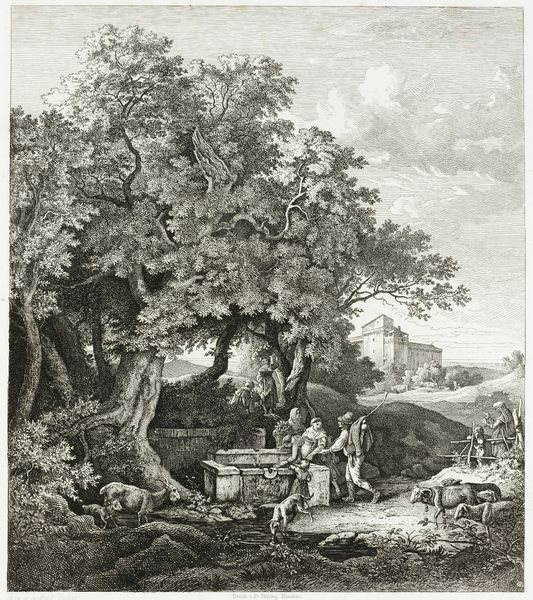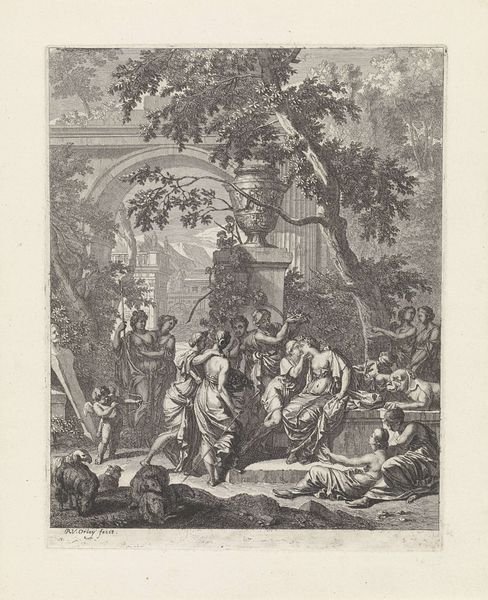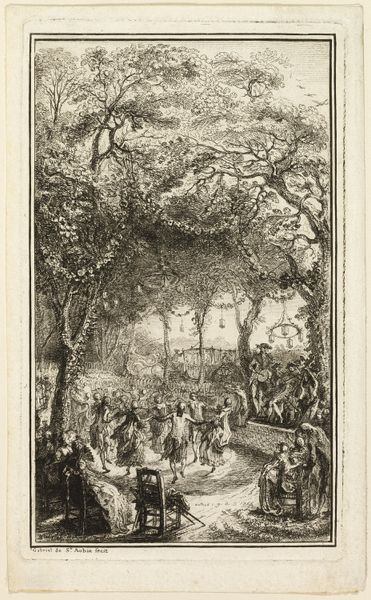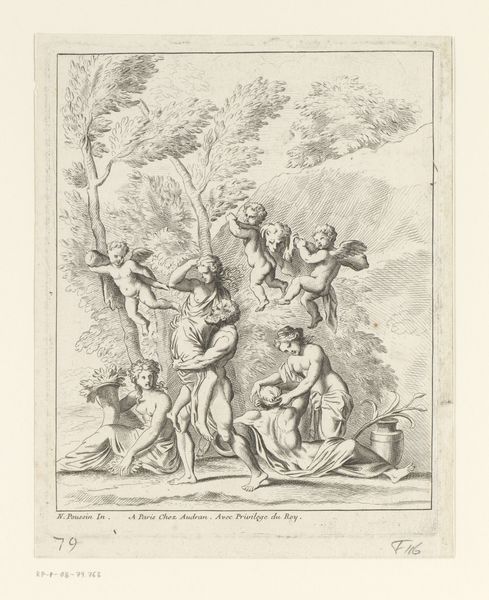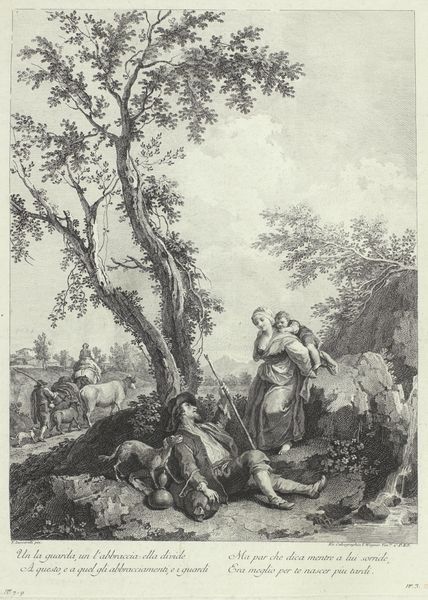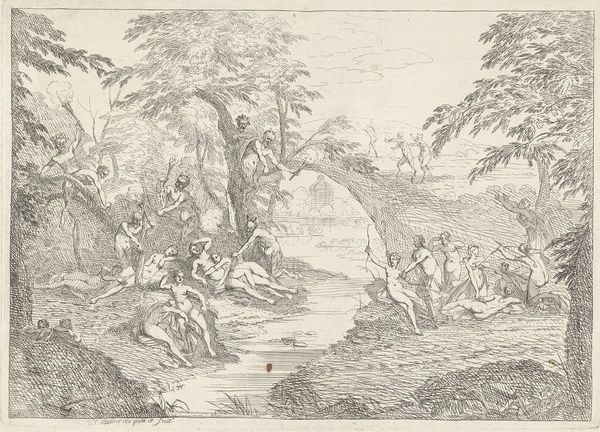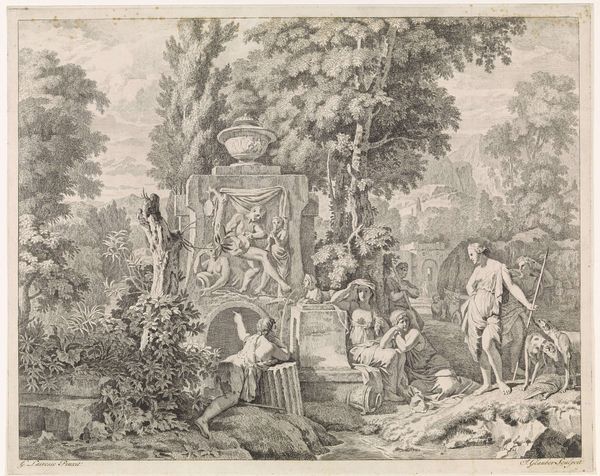
Minerva bezoekt Apollo en de muzen op de Parnassus, rechter deel before 1737
0:00
0:00
print, engraving
#
ink drawing
#
baroque
# print
#
landscape
#
figuration
#
history-painting
#
engraving
Dimensions: height 575 mm, width 475 mm
Copyright: Rijks Museum: Open Domain
Editor: Here we have "Minerva Visiting Apollo and the Muses on Parnassus, right part" by Pieter van den Berge, created before 1737. It's currently housed in the Rijksmuseum. It appears to be an engraving of a lively scene from mythology. The detail is incredible, especially in the foliage. It has quite an idyllic, almost chaotic energy. What stands out to you most in this print? Curator: Oh, that delightful chaos! Yes, I'm immediately drawn to the energy. See how van den Berge uses light and shadow – those dense pockets of trees framing the bursts of action. It’s like peeking into a hidden world, a theatre of the gods if you will. And look at Minerva herself! She’s arrived at this, shall we say, spirited gathering. I can almost hear the music, the laughter… maybe even a few slightly tipsy Muses. It's theatrical! How do you read her expression there in the ensemble on the left? Editor: She looks like she's trying to maintain composure amidst a party that's already in full swing. Is the whole image symbolic, then? Like, Parnassus representing artistic inspiration and all? Curator: Exactly! Parnassus, the mountain of the Muses, the very source of creative fire. And the contrast between Minerva's collected demeanor and the, ahem, enthusiastic expressions of the other figures highlights that delicate balance between divine inspiration and good ol' earthly revelry. Think about how artists during the Baroque period saw themselves— channeling the divine. Do you think he idealized that creative space, or gently poked fun at the whole idea? Editor: I think a little of both, perhaps? There's reverence in depicting such a classical scene, but there's also that slight chaotic humor. Curator: Beautifully said. A bit of irreverence with respect, then? A little nod and a wink. A perfect summary of van den Berge's perspective on this inspiring classical story.
Comments
No comments
Be the first to comment and join the conversation on the ultimate creative platform.
